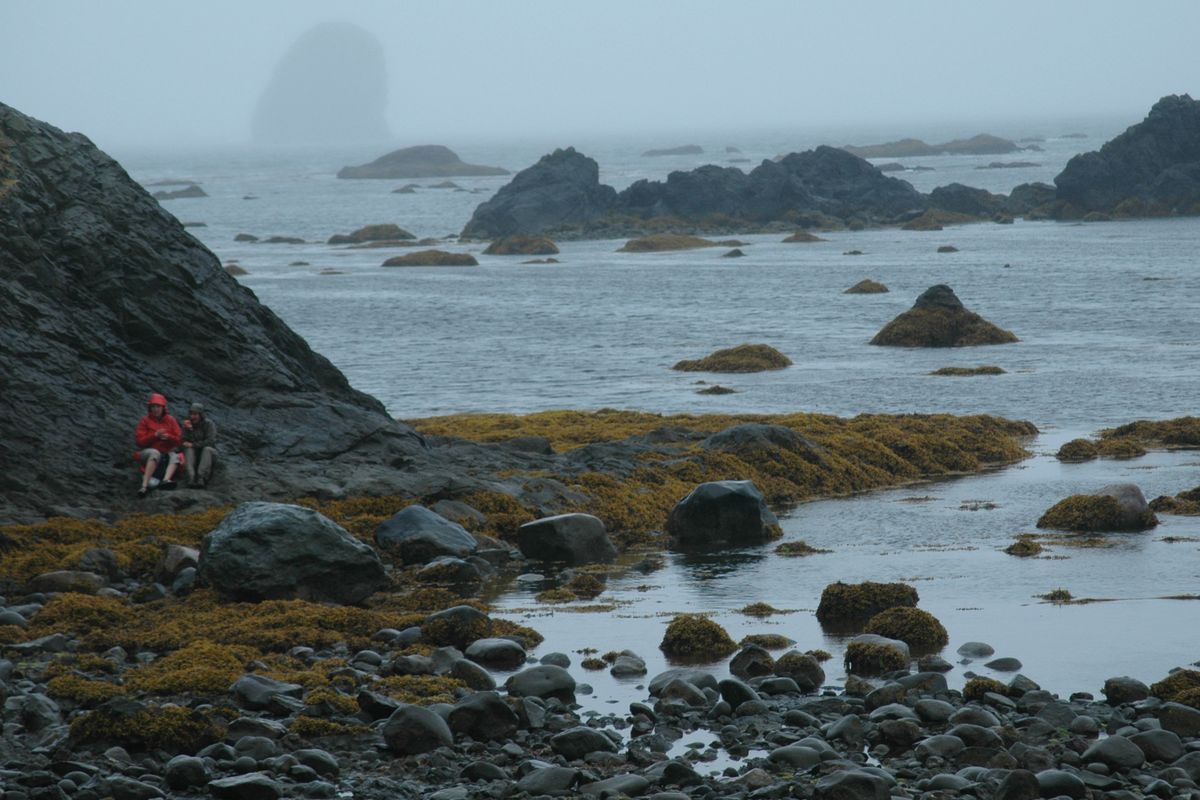Olympics: Ozette Triangle perfect intro to hiking Olympic beaches

Nine miles of hiking – sea level most of the way – three days to do it. Sounds like an easy backpack trip on Washington’s Olympic coast near Ozette. But maybe not.
Hopping over or diving under Sitka spruce toppled by winter storms while skipping across boulders slippery with seaweed makes the coast segment of the outing a bit tedious. Some hikers will find it a test, although seasoned backpackers will find it a breeze.
When it comes to outdoor recreation offerings, Washington and Oregon are mirror images in many regards.
One place they part ways, however, is on the wild Olympic coast, an experience only Washington offers in the lower 48 states.
Washington’s northwest coast, in Olympic National Park, has long sections where the Pacific Coast Highway and its spur roads approach, but don’t follow closely. That gives the wild Olympic coast a pair of 20ish-mile wilderness hiking opportunities, in addition to the perfect option for a shorter trip.
Some call the shorter overnight opportunity the “Ozette Triangle,” about three miles on a side.
From the trailhead on Lake Ozette, hikers walk three miles to a backcountry camp at Cape Alava, three miles down the coast to another camp at Sand Point, then three miles back through the coastal forest to the same trailhead.
You could do it as a day hike, but camping on the ocean beach is what makes the experience special.
It begins at Lake Ozette, one of the largest natural lakes in Washington, which happens to be as far off the beaten path as most anything gets in modern America. It’s a place to imagine yourself in northern Minnesota, or northern Maine.
Lake Ozette is out there – 170 miles from Seattle via Port Angeles and Sekiu before dropping south toward the Pacific Ocean.
The park maintains a summer ranger station, boat launches and a campground at Lake Ozette. You can also rent cabins at the Lost Resort on Ozette Lake, a quirky place that sets offseason overnight rates at the outdoor temperature when you arrive.
The resort also claims to have 99 different microbrews to sell to weary backpackers when they stumble out of the woods, but that is another story.
Did I forget to mention that it rains 12 months of the year at Lake Ozette? But it doesn’t rain every day, so you could get lucky during your visit.
We didn’t get lucky, but it didn’t matter because the wild Olympic coast is spectacular, rain or shine. And rain is more bearable during our visit from June through September than it would be in January.
Hint: September, after Labor Day Weekend, is among the best times to enjoy this area.
Upon arrival at Cape Alava after the three-mile hike, much of it on boardwalk through coastal forest, we picked the first camp we saw and shooed away the deer that arrived before us. That left us the afternoon to walk north along the beach, with light packs, stopping where we wanted.
We cooked dinner at a clear-running stream where it emerged from the forest on the rock-strewn beach.
Cape Alava is the site of one of the most significant archaeological digs of pre-European civilization in the Northwest. Most evidence of the dig has disappeared back into the forest, but many of the artifacts uncovered are displayed nearby in the Makah Museum at Neah Bay.
The south side of Point of Arches, a National Natural Landmark, dominates the northern coastline. The rugged series of sea stacks reaches a mile into the Pacific, though the view is better from Shi Shi Beach on the north, approachable as a day hike from Neah Bay.
The “trail” along the coast that connects the two camping areas is mostly over beach cobble. Only a short patch of golden sand beach is found here. The route passes Wedding Rocks, with its native petroglyphs, and climbs over a steep headland before campsites come in to view at Sand Point.
Hiking around the headland must be done at low tide. Consulting tide tables will help you plan your timing. Allow time to enjoy exploring the tide pools.
We spent midday watching sea otters cavorting in the kelp beds, through binoculars from our camp. Then we hiked south along two miles of sand beach in search of fresh water to drink.
We opted for Wish Creek, which was close to camp and brown as strong tea. It tasted good and needed only standard wilderness water treatment: either boiling, filtering or iodine.
Rain continued to fall as we hiked out on the third day. But it didn’t matter. We skipped the microbrews at the resort and drove directly to the laundry 30 miles away in Sekiu.
Outdoors editor Rich Landers contributed to this story.